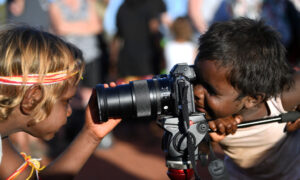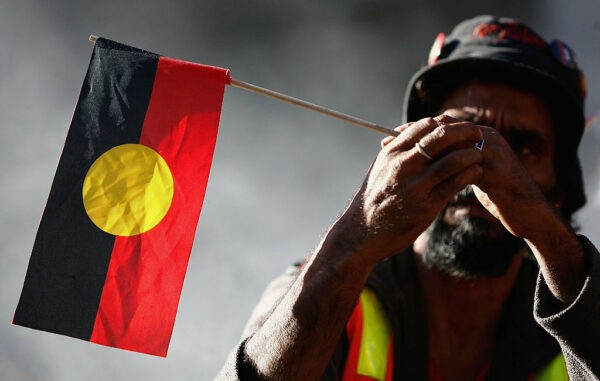What Will Change With a Successful Voice Vote?
Commentary With a referendum approaching, people will be asked to vote yes or no to the proposed Indigenous Voice to Parliament. In this article, I propose other questions worthy of consideration before the referendum, but in my opinion, they have not received the attention they deserve. Like President of the Federal Young Liberals, Dimitry Chugg-Palmer, “I, along with many other Australians, just want to get a few more answers and a bit more clarity on what exactly it is that we’re voting on.” My first question starts at the beginning and addresses why we need The Voice. The demand for The Voice is premised on the claim that Indigenous Australians currently lack a voice. Unfortunately, this claim is typically never clarified. However, using her voice, Minister for Indigenous Australians Linda Burney has said that under our Constitution, Aboriginal and Torres Strait Islander Australians have had no voice and no say in the matters that have affected our communities. Really? Even though many Indigenous organisations and advisory structures within government departments are dedicated to improving the lives of Indigenous Australians. Understandably, with such an army of voices, many from the Yes camp are asking the reasonable question: “Well then, why are far too many Indigenous Australians needlessly suffering?” I do not believe problems persist because of a lack of goodwill towards them or a shortage of skilled people working in Indigenous affairs who could make a real and meaningful difference. The Aboriginal and Australian national flags fly together on the Sydney Harbour Bridge, in Sydney, Australia, on Jan. 26, 2023. (Wendell Teodoro/Getty Images) These good people, both Indigenous and non-Indigenous, are hampered due to the bugbears of the mechanics of the bureaucratic process, identity politics, poisonous ideologies, and political correctness. Do these bugbears seem to characterise current discussions about The Voice? I believe, yes. If The Voice does get up, is it possible we will see more of what we are already seeing? Again, I believe, yes. These bugbears have existed for decades across successive governments and contribute to the arterial plaque that weakens the heartbeat of Indigenous communities, resulting in dysfunction and preventable deaths. As a result, many of these communities are on life support. Questions That Need Discussion The questions I have asked should be discussed before a referendum date is proposed. The resulting discussion could show that the proposed referendum question could be modified to ensure greater public support. However, I suspect it is going ahead in its current proposed form regardless. These questions asked here have not received much attention. Instead, much of the discussion has centred around what are the possible implications and unintended adverse consequences of a change to the Constitution. While it’s important to discuss how this could affect both Indigenous and non-Indigenous Australians, I do believe it should be discussed only after asking the more fundamental questions I have asked so far in this article and the few that I list below. Ronald ‘Ringo’ Terrick, an elder of the Wurundjeri tribe, sits on the steps of Parliament House during Sorry Day in Melbourne, Australia, on May 26, 2007. (Simon Fergusson/Getty Images) Before referendum day, I ask the voting public to consider the following additional questions: “Are the fundamental needs of Indigenous Australians the same as those of non-Indigenous Australians?” “Are non-Indigenous Australians just as capable as Indigenous Australians when it comes to understanding and helping Indigenous Australians?” “Are the problems affecting Australia’s most disadvantaged Indigenous Australians more the result of race than place?” In other words, “Is remoteness a major factor that disadvantages too many Indigenous Australians?” “Given an estimated cost of $170 million for the referendum, could this money be better spent in ways that bring about lasting real and meaningful change to the lives of those Indigenous Australians who are most disadvantaged?” These questions can promote discussion that contributes to eradicating disadvantages among Indigenous Australians and is not contingent on The Voice. However, if The Voice gets up, I hope its members consider all the questions posed in this article. If The Voice does not get up, then we know what should be done. Either way, we must proceed knowing that differences between Indigenous and non-Indigenous Australians should only be addressed after first understanding the more significant commonalities between the two groups. We must ensure that the most disadvantaged Indigenous Australians have access to the same opportunities that the most advantaged Indigenous Australians and most other Australians have. Most importantly, we must see all this as Australians helping Australians because this is what Aussies do best. Views expressed in this art

Commentary
With a referendum approaching, people will be asked to vote yes or no to the proposed Indigenous Voice to Parliament. In this article, I propose other questions worthy of consideration before the referendum, but in my opinion, they have not received the attention they deserve.
Like President of the Federal Young Liberals, Dimitry Chugg-Palmer, “I, along with many other Australians, just want to get a few more answers and a bit more clarity on what exactly it is that we’re voting on.”
My first question starts at the beginning and addresses why we need The Voice. The demand for The Voice is premised on the claim that Indigenous Australians currently lack a voice. Unfortunately, this claim is typically never clarified.
However, using her voice, Minister for Indigenous Australians Linda Burney has said that under our Constitution, Aboriginal and Torres Strait Islander Australians have had no voice and no say in the matters that have affected our communities.
Really? Even though many Indigenous organisations and advisory structures within government departments are dedicated to improving the lives of Indigenous Australians.
Understandably, with such an army of voices, many from the Yes camp are asking the reasonable question: “Well then, why are far too many Indigenous Australians needlessly suffering?”
I do not believe problems persist because of a lack of goodwill towards them or a shortage of skilled people working in Indigenous affairs who could make a real and meaningful difference.

These good people, both Indigenous and non-Indigenous, are hampered due to the bugbears of the mechanics of the bureaucratic process, identity politics, poisonous ideologies, and political correctness.
Do these bugbears seem to characterise current discussions about The Voice? I believe, yes.
If The Voice does get up, is it possible we will see more of what we are already seeing? Again, I believe, yes.
These bugbears have existed for decades across successive governments and contribute to the arterial plaque that weakens the heartbeat of Indigenous communities, resulting in dysfunction and preventable deaths. As a result, many of these communities are on life support.
Questions That Need Discussion
The questions I have asked should be discussed before a referendum date is proposed. The resulting discussion could show that the proposed referendum question could be modified to ensure greater public support.
However, I suspect it is going ahead in its current proposed form regardless.
These questions asked here have not received much attention. Instead, much of the discussion has centred around what are the possible implications and unintended adverse consequences of a change to the Constitution.
While it’s important to discuss how this could affect both Indigenous and non-Indigenous Australians, I do believe it should be discussed only after asking the more fundamental questions I have asked so far in this article and the few that I list below.

Before referendum day, I ask the voting public to consider the following additional questions:
“Are the fundamental needs of Indigenous Australians the same as those of non-Indigenous Australians?”
“Are non-Indigenous Australians just as capable as Indigenous Australians when it comes to understanding and helping Indigenous Australians?”
“Are the problems affecting Australia’s most disadvantaged Indigenous Australians more the result of race than place?” In other words, “Is remoteness a major factor that disadvantages too many Indigenous Australians?”
“Given an estimated cost of $170 million for the referendum, could this money be better spent in ways that bring about lasting real and meaningful change to the lives of those Indigenous Australians who are most disadvantaged?”
These questions can promote discussion that contributes to eradicating disadvantages among Indigenous Australians and is not contingent on The Voice.
However, if The Voice gets up, I hope its members consider all the questions posed in this article.
If The Voice does not get up, then we know what should be done.
Either way, we must proceed knowing that differences between Indigenous and non-Indigenous Australians should only be addressed after first understanding the more significant commonalities between the two groups.
We must ensure that the most disadvantaged Indigenous Australians have access to the same opportunities that the most advantaged Indigenous Australians and most other Australians have.
Most importantly, we must see all this as Australians helping Australians because this is what Aussies do best.
Views expressed in this article are the opinions of the author and do not necessarily reflect the views of The Epoch Times.












